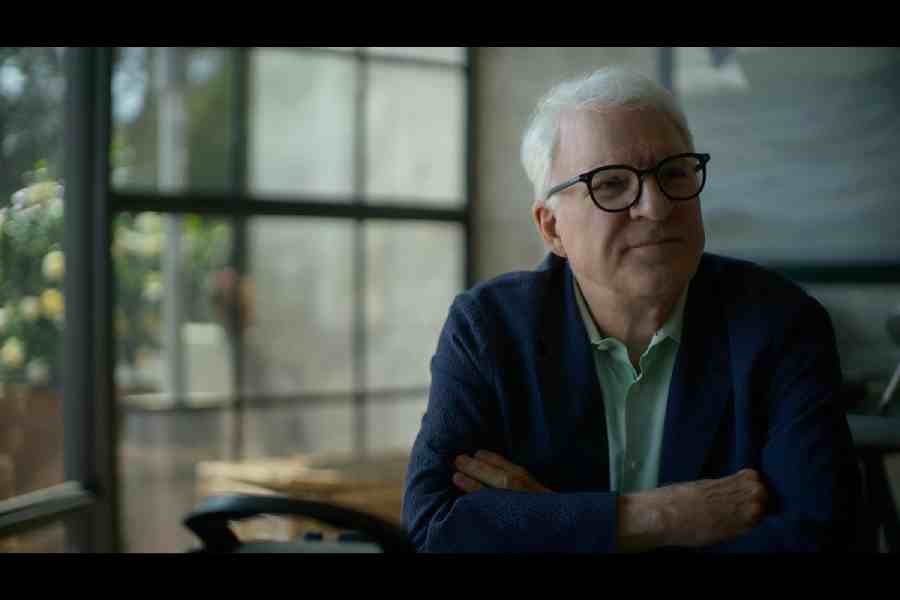The Steve Martin we see today has more to do with the many hit Hollywood films rather than the stand-up comedian who came to prominence in the 1970s, playing the banjo, showing card tricks and juggling balls. Yet, there is something constant about the man: his never-ending supply of deadpan replies.
The many Steves are captured in Steve! (Martin): A Documentary in Two Pieces, directed by Oscar-winning filmmaker Morgan Neville (20 Feet from Stardom and Won’t You Be My Neighbour?), an Apple Original presentation which is now streaming on Apple TV+. Neville divides the documentary into two 90-plus-minute halves with the first diving into the 78-year-old’s career as a standup (he is seen through archival footage) and then the actor appears on camera to speak about his life as an actor, musician and screenwriter.
The first half is the Steve we don’t always talk about. He was 10 years old when he got a job at Disneyland to sell the in-park paper Disneyland News. Since he was done by 9am, he spent the rest of the day in the park for free, hanging out at the Golden Horseshoe Revue. There he saw the comedian Wally Boag. “He was the first comedian I ever saw live. I saw his show hundreds of times. My fantasy was that I would be in the audience and he would get sick. Somebody would say: ‘Does anybody know this show?’ I would be ready to go,” Martin is heard in a voiceover.
For him, Disneyland was an escape. His sister Melinda Dobbs says he would get the “frustrating end” from their dad at home and there was no affection. Disneyland made Martin feel that he was in the happiest place on earth.
Things didn’t move fast for the legendary actor. He got a job at a magic shop, which taught him a few tricks but then he learned to play the banjo, which came in handy when he realised that the world of “magic” had a dead end while comedy was wide open for him. He loved what he saw: Jerry Lewis, Laurel and Hardy, Nichols and May, Lenny Bruce and Charlie Chaplin. But he had nothing in common with them.
If you are wondering if things changed after that, well, no luck. When the man turned 18 he was at Knott’s Berry Farm where there was a theatre called Birdcage Theatre. And there was Stormie Sherk, who was enthusiastic and always trying to teach Martin something new, like reading William Somerset Maugham’s The Razor’s Edge.
This was when he joined Long Beach California State University to study philosophy where he broke down his thoughts about comedy. “What if I created tension and never released it? What if I could get real laughter, like I would get with friends,” he says in the documentary. Later, he transferred to the University of California, Los Angeles, to take advanced logic.
Life started rolling in the right direction. While a cultural shift was happening in the 1960s with the Beatles at its centre, Martin thought wouldn’t it be funny if there was a comedian who thought he wasn’t funny. A lot of the comedy in the 1960s and ’70s was political but he did things differently.
The second part of the documentary showcases the Martin we know so well and there is a series of interviews with him in his home, with his wife Anne Stringfield and performing partner Martin Short. Usually a very private man, Martin opens up perhaps only to understand himself better. There is no psychoanalysis… just saying things as it happened.
At one point he is describing his father’s reaction to his first big film, The Jerk (1979) (“Well, he’s no Charlie Chaplin,” Glenn Martin said to his son after the premiere) and then he is seen going through copies of his movie scripts.
The only problem with the documentary is its length, perhaps another 90 minutes would have helped. There are some anecdotes about hits like Three Amigos! and Roxanne but what about Parenthood or Father of the Bride? His box-office disaster Pennies From Heaven (1981) showed him the “other” side of Hollywood and fame. Perhaps more on that would have helped.

A young Steve Martin
Yet, director Morgan Neville has done a fantastic job telling the story of an intelligent and talented man who has inspired generations of standup comedians. It’s full of surprising warmth.

